FlexiConnect
The FlexiConnect app is designed to help people find flexible work opportunities. It caters to students, part-time workers, and freelancers. Our team developed this app by conducting thorough research and usability tests to ensure it meets users' needs. We ensured user-friendly features and clear layouts, making the app easy to navigate and use. FlexiConnect aims to connect job seekers with employers quickly and efficiently, offering a reliable platform for finding flexible jobs.

My Role
UI/UX Designer and researcher, designing an app, from conception to final prototype.
- Problem-Solving
- Ideation
- Interview
- Affinity mapping
- Persona
- Empathy Map
- Information Architecture
- User flow
- Wireframes
- Usability
Design Process

Project Timeline
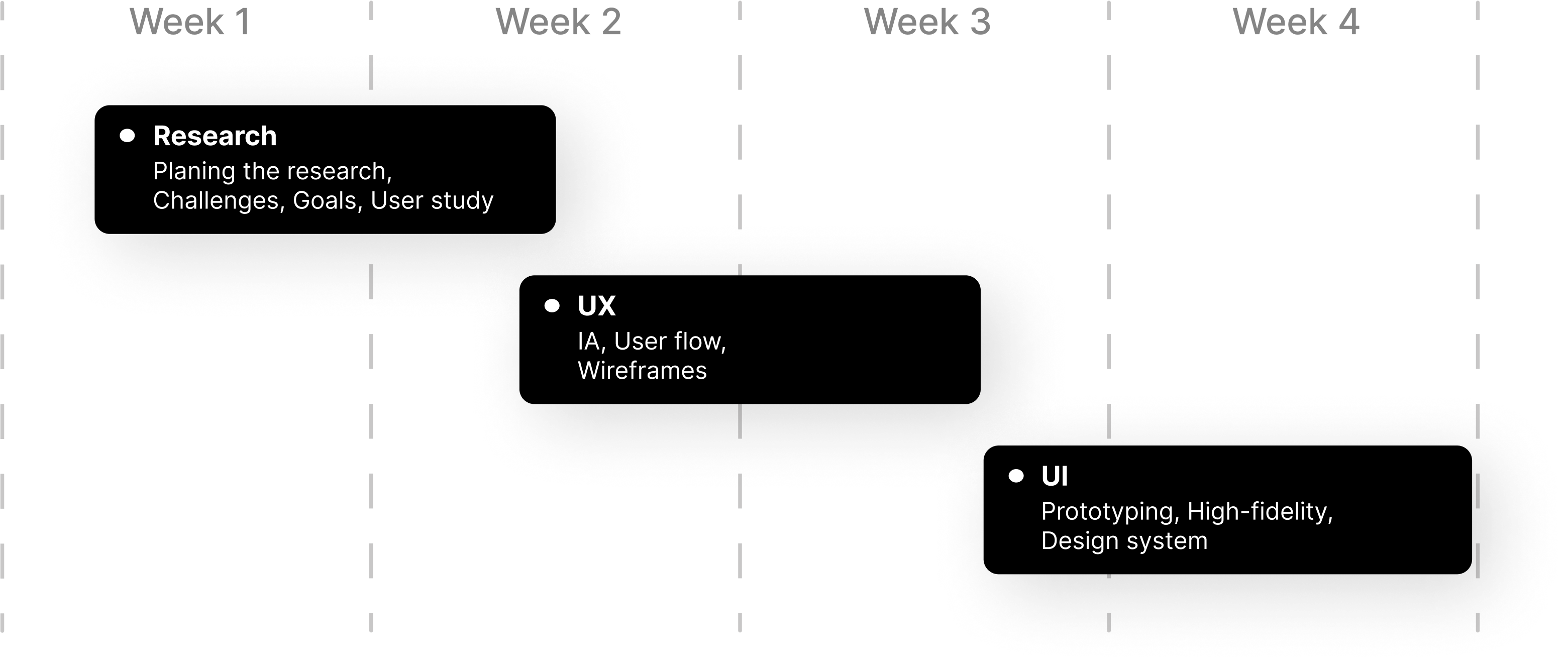
Planning the Research
Research Goals
As work patterns change, there's a rising need for flexible job opportunities. This research delves into the needs and challenges of students, part-time workers, freelancers, and businesses like restaurants in finding and providing flexible work. By examining these dynamics, we aim to uncover insights for crafting better solutions that cater to both job seekers and employers.
- WHO: Students, part-time workers, freelancers, and businesses like restaurants.
- WHAT: Investigate their needs and challenges in finding/filling flexible work.
- WHY: Understand motivations and difficulties, aiming to improve current systems.
- HOW: Employ surveys, interviews, and data analysis to gather insights.
- WHERE: Conduct research in diverse settings to capture varied perspectives.
Research Questions
- What motivates individuals to seek flexible employment?
- What challenges do students, part-time workers, and freelancers commonly encounter in finding flexible work?
- How do individuals search for short-notice job opportunities, and what factors influence their decision-making?
- What factors contribute to short-staffing issues in businesses, particularly restaurants?
- How do businesses currently address short-term staffing needs, and what hiring barriers do they face?
- What are the expectations and preferences of job seekers and employers regarding flexible work arrangements?
- What are the main pain points in existing platforms for connecting job seekers with short-notice work?
- How do demographic factors impact attitudes and behaviors related to flexible employment?
Research Method
1. User Interviews:
Interview students, part-time workers, freelancers, and restaurant managers to understand their experiences, needs, and challenges related to flexible work arrangements.
2. Surveys:
Survey a diverse group of individuals, including students, part-time workers, freelancers, and businesses, to gather quantitative data on their preferences, motivations, and pain points with flexible employment.
Participants
Interview Participants:
- Recruit 2 students, 1 part-time worker, 1 freelancer, and 1 restaurant manager.
- Ensure diversity in demographics and employment status.
- Conduct semi-structured interviews on motivations, challenges, and preferences for flexible work.
Survey Participants:
- Utilize online platforms to recruit 20+ individuals.
- Aim for diversity in demographics and industries.
- Administer a structured online survey on attitudes and preferences towards flexible work.
Interview
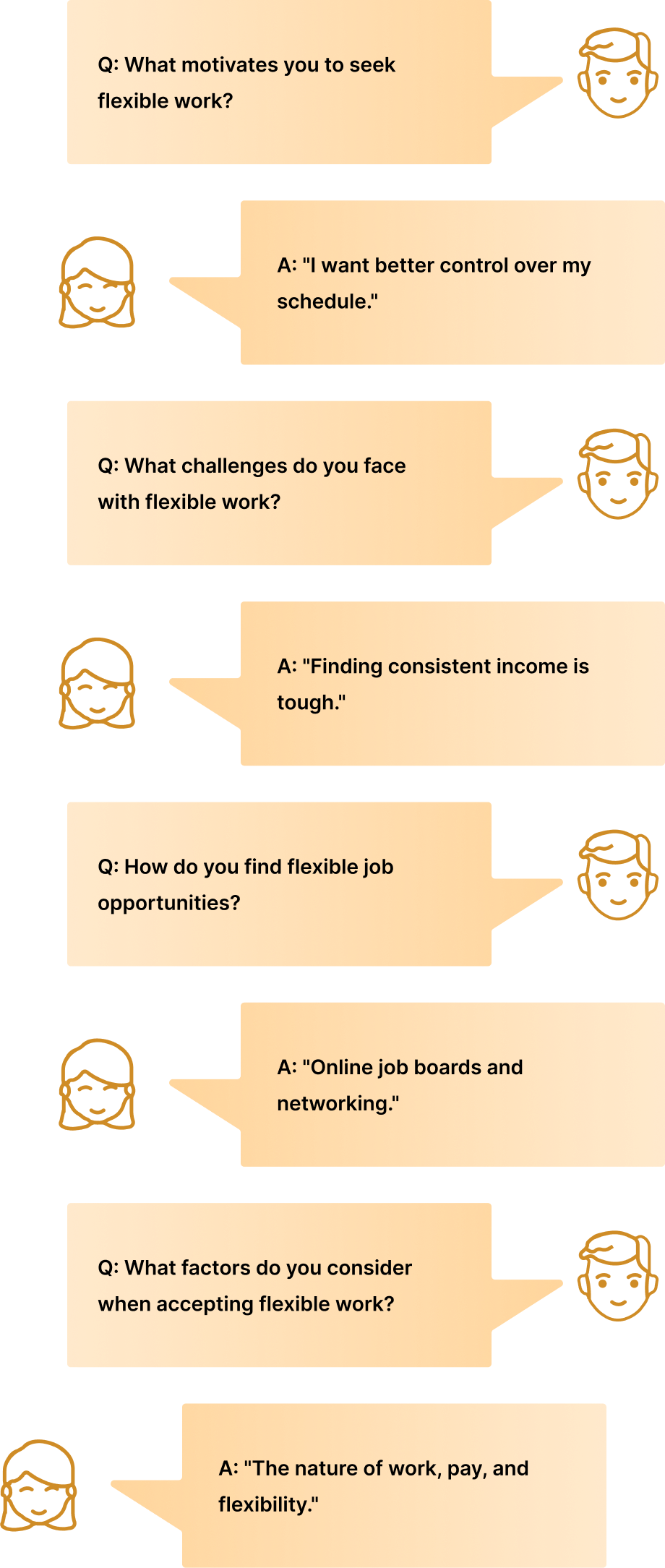
Insights
Recommendations
- Develop a user-friendly scheduling app or website.
- Allow users to easily set and adjust their work hours within the app to provide better control over their schedules.
- Introduce features that connect users with more consistent job opportunities, such as long-term contracts or regular gigs.
- Incorporate advanced search filters and personalised job recommendations to help users find relevant flexible job opportunities more efficiently.
- Include features for easy shift management, communication, and notifications.
- Integrate automated shift-swapping functionality to handle last-minute changes seamlessly.
- Incorporate performance tracking tools to monitor productivity and optimise staffing.
- Offer training modules within the platform to enhance teamwork and service quality.
Survey Response
What do you do?

How do you usually find jobs?
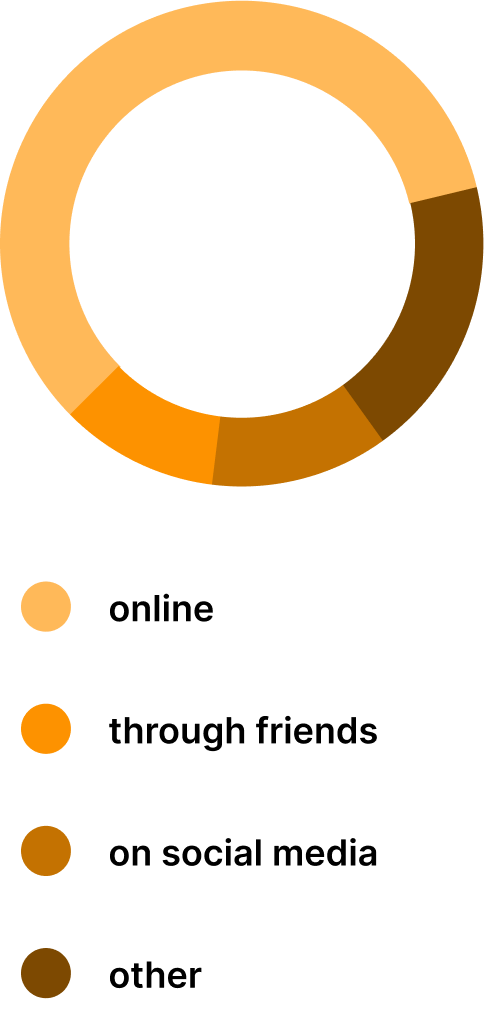
How often do you look for flexible work?
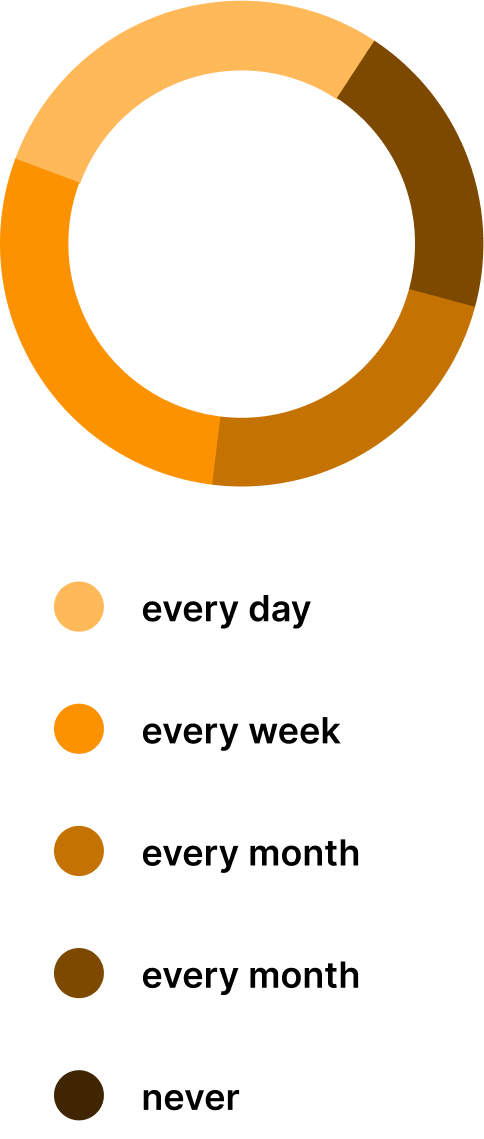
Insights:
- High Demand for Flexible Work: Many respondents check daily for flexible work opportunities.
- Preference for Remote Work: Most prefer working from home.
- Importance of Schedule Control: Control over work schedules is very important.
- Challenges in Finding Work Quickly: Many struggle with quickly finding jobs.
- Mixed Satisfaction: Satisfaction with job flexibility varies.
- Mixed Reviews on Job Search Platforms: Opinions on current websites and apps are mixed.
- Key Job Selection Factors: Salary and job match are crucial in choosing jobs.
- Awareness of Options: People may lack knowledge about flexible work options.
- Difficulty Managing Multiple Jobs: Some struggle with managing multiple roles.
Recommendations:
- Improve Job Search Platforms: Make job search websites and apps more user-friendly and efficient.
- Increase Awareness: Educate job seekers about flexible work options.
- Offer More Remote Work: Provide more work-from-home opportunities.
- Streamline Hiring: Make hiring processes faster.
- Support Multiple Jobs: Develop tools to help manage multiple jobs.
- Focus on Salary Transparency: Clearly communicate salary details.
- Promote Flexible Schedules: Highlight roles with flexible scheduling.
Understanding the User
Persona
Problem Statement
Anne, a student in Bergen, struggles to find part-time work that fits her schedule. Despite her need for income and experience, Anne needs help finding flexible job options that match her availability. Anne's ability to balance work and studies is limited without better solutions.

Affinity Map
This affinity map highlights common themes and insights from both interviews, helping to identify key areas for improvement in flexible work platforms.

Empathy Map
This empathy map captures the perspectives, actions, and emotions of Rgat regarding flexible work arrangements, providing insight into their motivations, challenges, and experiences.
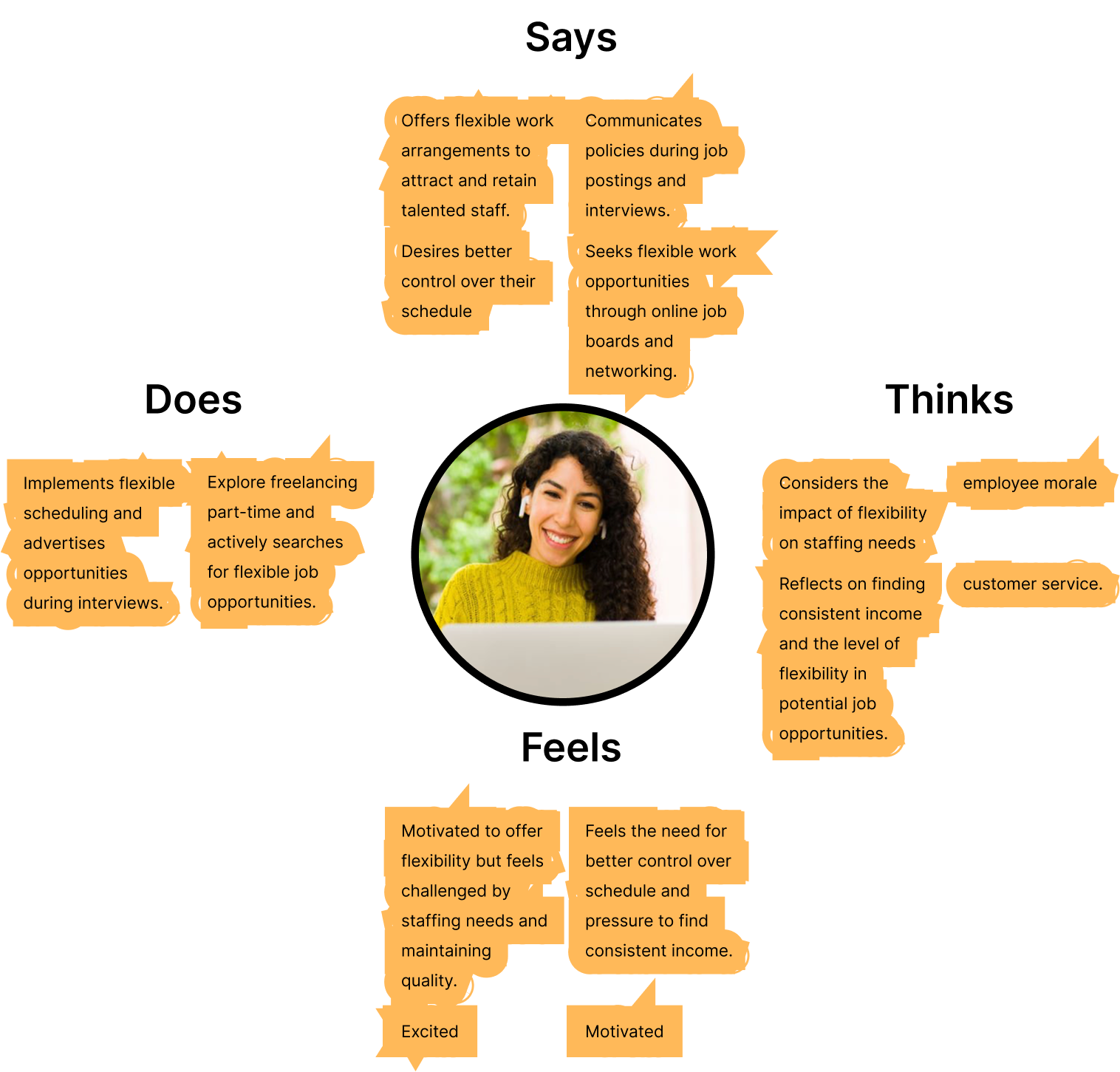
Starting the Design
HMW Questions
- How might we help Anne find part-time work that fits her class schedule without relying on traditional job search methods?
- How can technology assist Anne in identifying flexible job options that align with her availability and preferences?
- How might we empower Anne to access and manage her part-time work opportunities remotely, promoting flexibility and convenience?
- How can we simplify the process of sharing information about part-time job openings and experiences with Anne?
- How might we make it easier for Anne to quickly identify and apply for part-time positions that suit her schedule while she's on the go?
MoSCoW
This MoSCoW prioritisation ensures a focused and strategic development approach by prioritising the most critical features for success.
M
Must Have
Develop a user-friendly platform for finding part-time jobs that fit Anne's class schedule
S
Should Have
Integrate features for Anne to easily filter job listings based on her availability and preferences.
C
Could Have
Explore additional features to enhance Anne's experience in searching and applying for part-time jobs.
W
Will Not Have
Exclude features deemed non-essential for the project's timeframe and primary goals.
Brainstorming
These brainstorming ideas aim to address the challenges faced by individuals seeking flexible work opportunities, providing a comprehensive solution for managing schedules and finding suitable employment.

Single chosen solution
Solution: A combined mobile application and web platform solution is recommended for Anne and Tony.
Concept Overview: This solution involves developing a user-friendly mobile app accessible on smartphones and a complementary web platform accessible via browsers. This approach offers flexibility and convenience for both users.
Key Features:
- Mobile Accessibility: The mobile app enables Anne and Tony to access essential features on the go, while the web platform provides additional functionalities for more detailed tasks. Anne can browse job listings and apply for positions through the web platform.
- Part-time Job Search: Anne can easily browse job listings and apply for part-time positions through both platforms. Tony can post job openings for part-time positions on the web.
- Real-time Updates: Anne and Tony receive instant notifications and updates across both platforms, ensuring timely communication and decision-making.
Sketch of the top solution
The optimal solution is to develop a straightforward and user-friendly mobile application and web platform for Anne and Tony. These platforms will enable Anne to easily search for part-time job opportunities that align with her schedule while allowing Tony to post job openings efficiently. With intuitive interfaces and real-time updates, Anne and Tony can stay connected and informed, enhancing their overall experience and satisfaction.
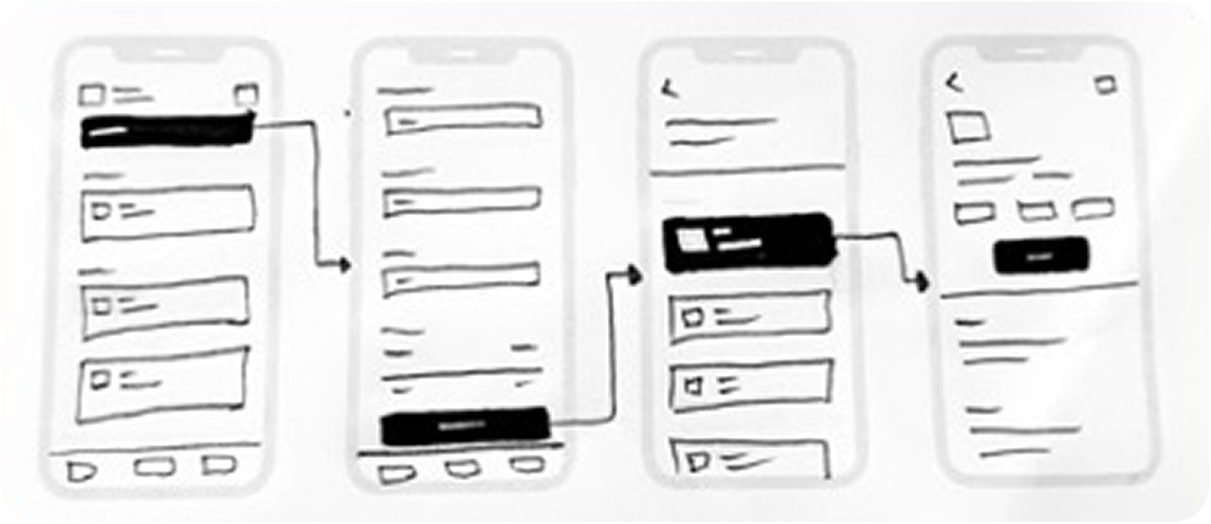
User flow
This user flow outlines Anne's step-by-step process when managing her flexible work schedule using the FlexiConnect app. It ensures a streamlined and organized approach to her job search and application tasks.
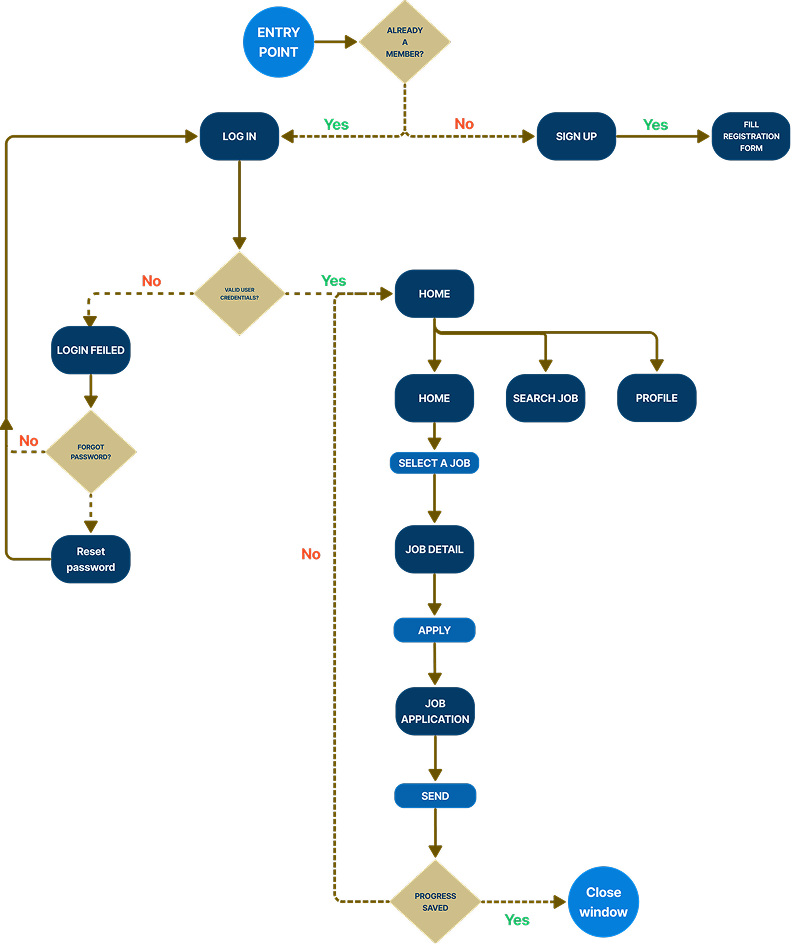
IA
This diagram visually outlines the essential components and functions of the system for Anne's Job application.
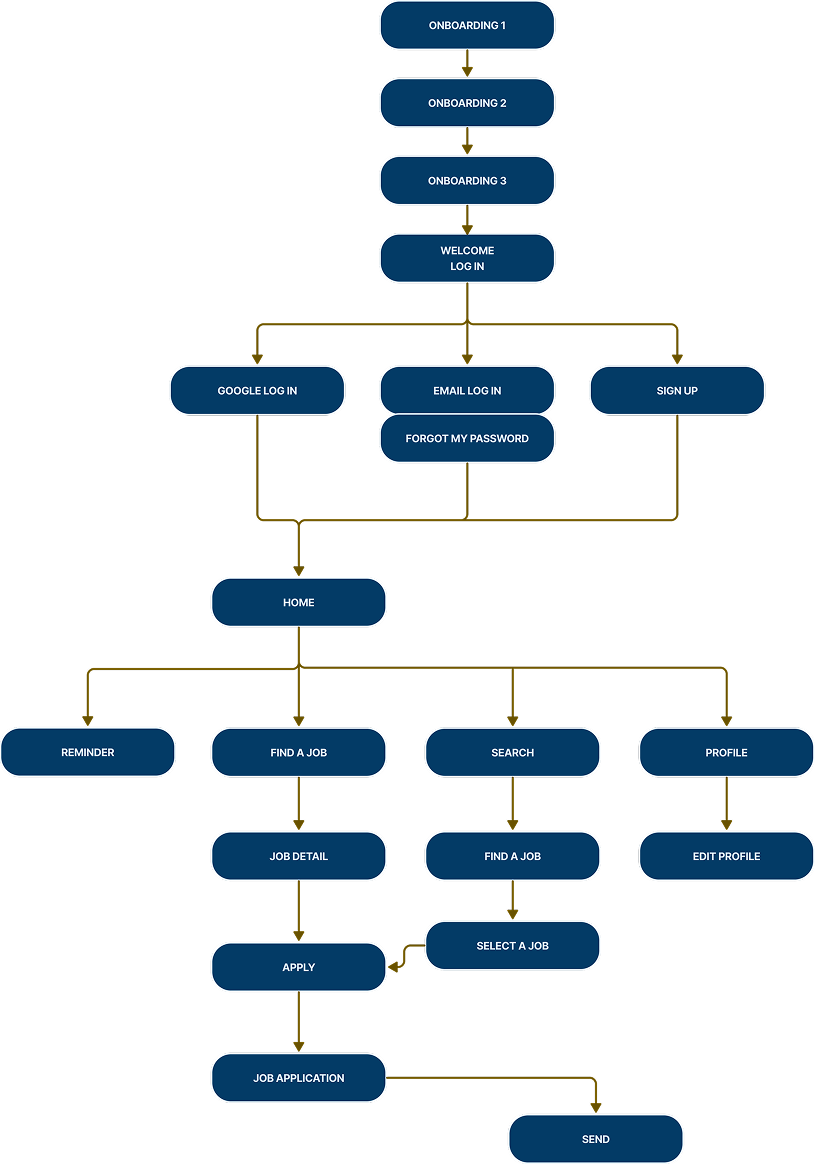
Low-fidelity wireframes
We made low-fidelity wireframes for the FlexiConnect app to show its basic layout and features. These wireframes help us make sure the app is easy to use and meets users' needs before we design the details.

Usability Test
Usability test
During the usability test for FlexiConnect, we'll guide users through simple tasks to see how they use the app. By watching what users do, we'll find any problems they have. Getting feedback from users is important to make sure the app works well for them. This testing helps make FlexiConnect easier to use and better for everyone.
Test Details
Test Questions
- How quickly can users start searching for part-time or flexible jobs in the app?
- Can users successfully initiate a job search and find relevant listings?
- What insights can we gather from the steps users take to begin their job search?
- Are there any obstacles or challenges users encounter during the job search process?
- Is the job search process user-friendly and easy to navigate for users?
Participants
- 5 participants
- We are looking for users aged 18-62 who actively search for part-time or flexible work opportunities.
Methodology
- 25-30 minutes
- Norway, remote
- Unmoderated usability test
- Participants were instructed to begin planning a part-time job search on a high-fidelity prototype of the FlexiConnect app.
High-Fidelity Tested
The high-fidelity wireframe for the FlexiConnect app was tested
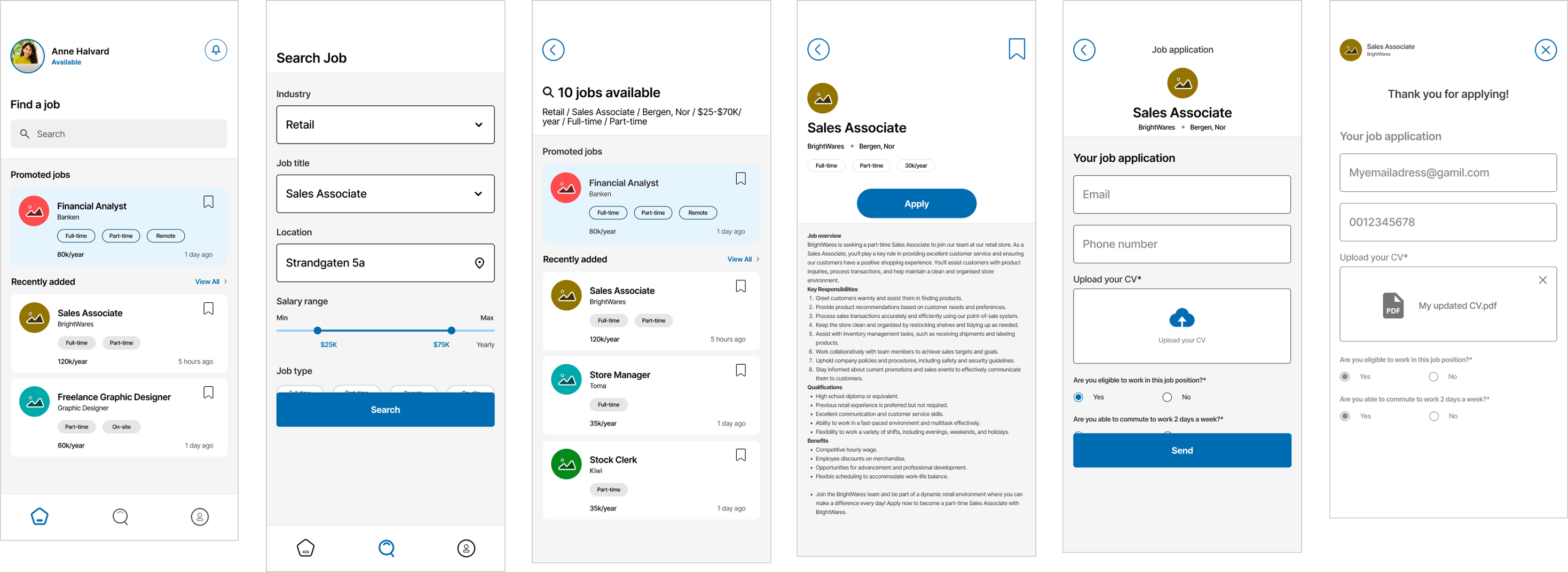
Themes
Usability test General finding
This is the second usability study. Findings from the first guided the designs from wireframes to mockups. The second study used a high-fidelity prototype and revealed aspects needing refining.
Round 1 findings (Usability test 1)
- Users said couldn't find the option to edit their saved searches.
- The search function worked well for finding specific job titles.
Round 2 findings (Usability test 2)
- Users said the login or sign-up process was good.
- Users said that finding a job and apply it was easy.
- Users said that finding a job and saving for later use was fine.
- Users said that editing saved searches was good.
UI Design
Homepage
This homepage enables users to search for jobs either by scrolling or by using the search feature. Once the desired job is found, clicking on it will take the user to a page with detailed information about the job. Alternatively, the user can simply save the job by clicking on the save icon.
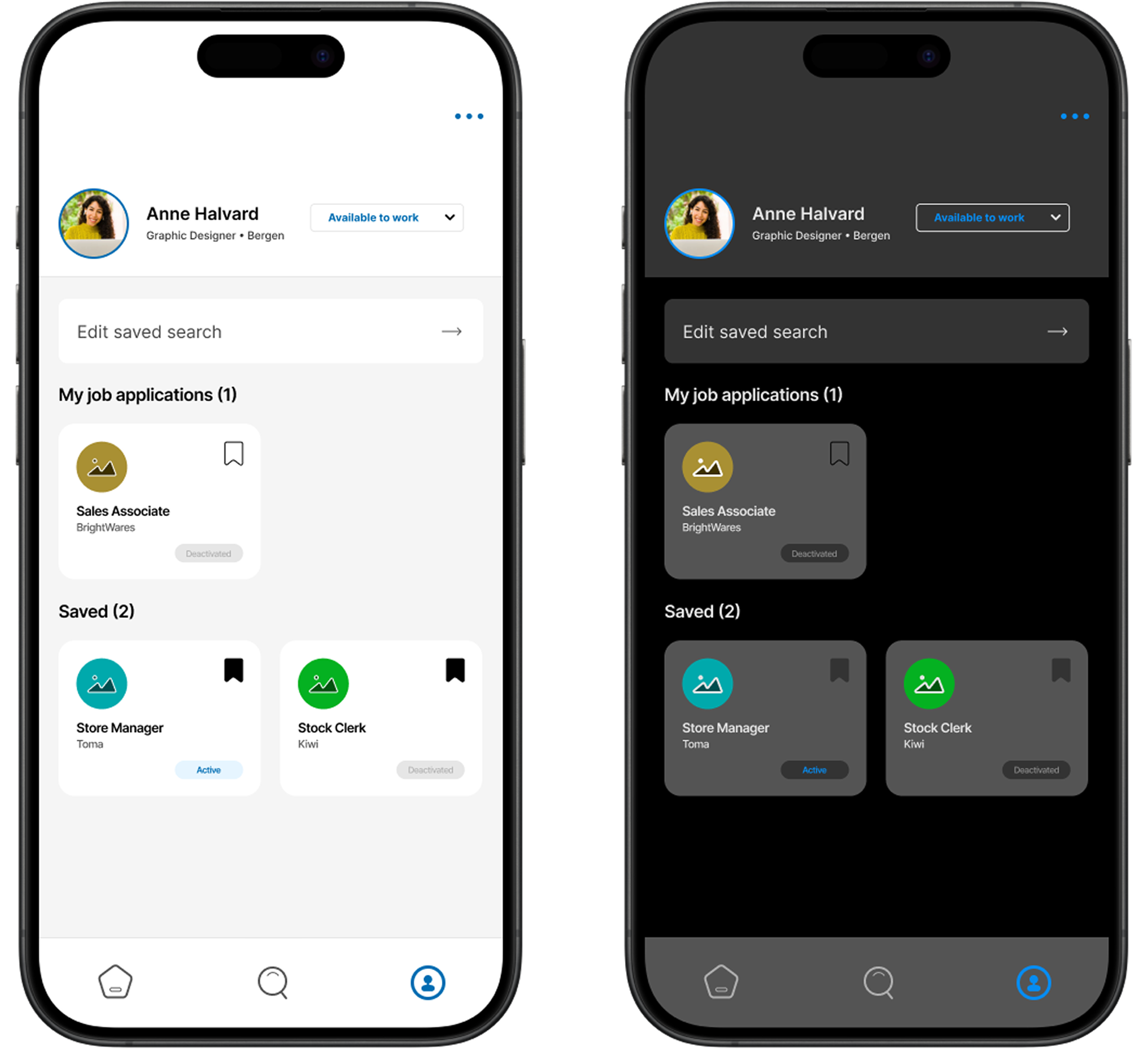
Search page
This search page allows users to search for jobs by filling in the search feature and clicking on the Search button. The user will be taken to a page with a list of jobs found.
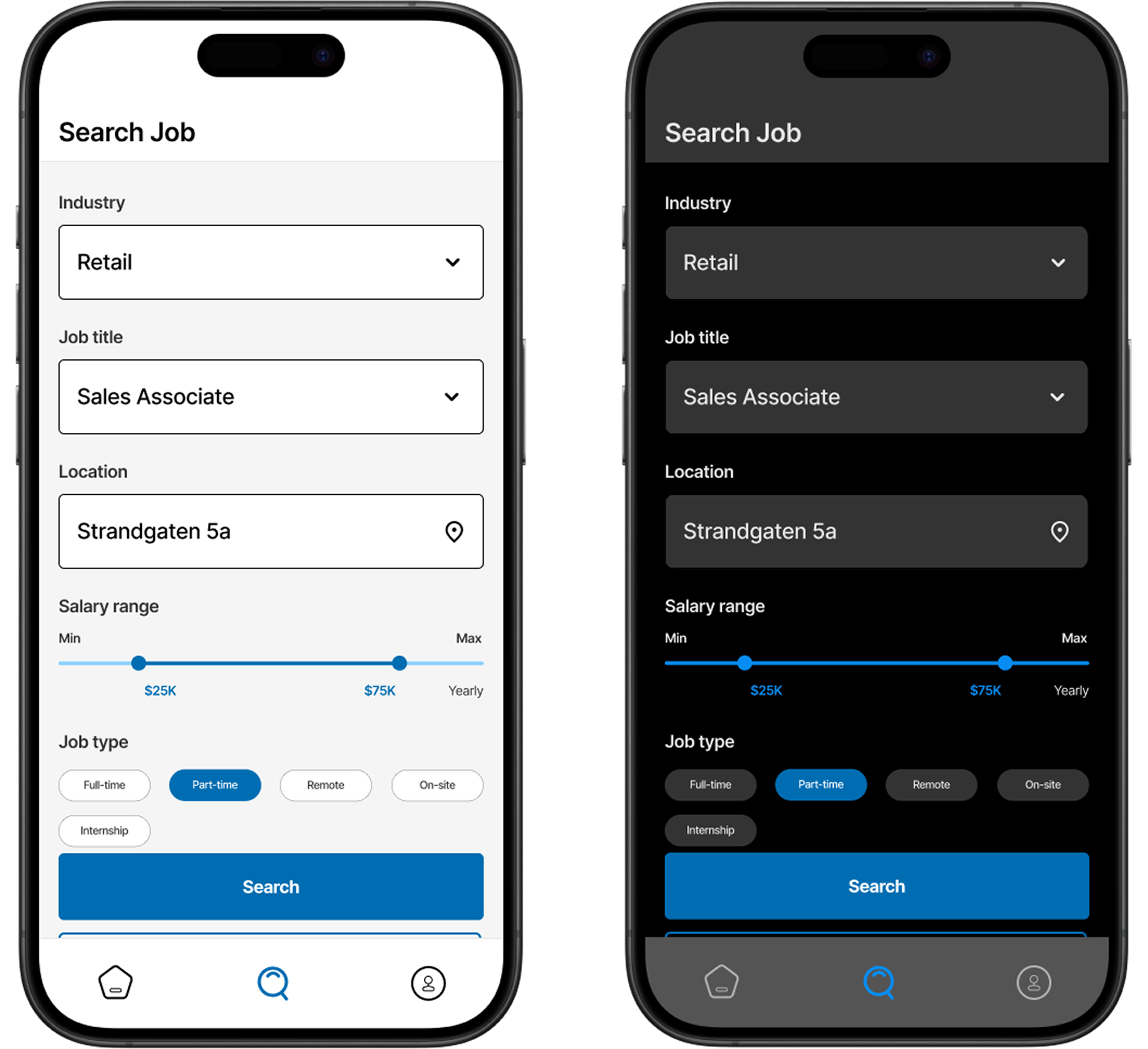
Profile page
This profile page displays user profiles and allows editing. Users can also view submitted job applications, saved jobs, and manage saved searches.

Accessibility Considerations
Accessibility
This is about accessibility considerations making digital products that everyone can use, including people with disabilities. This includes those with vision, hearing, movement, or thinking difficulties. By focusing on accessibility, we make sure our products work for everyone.
Provided access to users who are vision impaired through adding alt text to images for screen readers.
Used icons to help make navigation easier.
We used a clear font with strong contrast to make it easier for all users to read.
We used a clear font with strong contrast to make it easier for all users to read.
Design System
Color
We picked blue as the main color for the FlexiConnect app because it makes people feel calm and peaceful. Blue is known for creating a sense of safety and trust. When businesses use blue in their ads, it shows they care about customers feeling secure. So, by using blue in the FlexiConnect app, we want users to feel calm and confident while using it.

Typography
We chose to use the Inter font for our app because it is specially designed for screens like ours. This font is very user-friendly, especially when it comes to small text, which is common in job applications. Inter was created by a talented designer named Rasmus Andersson and is free to use, which aligns with our app's focus on being flexible and accessible to everyone.
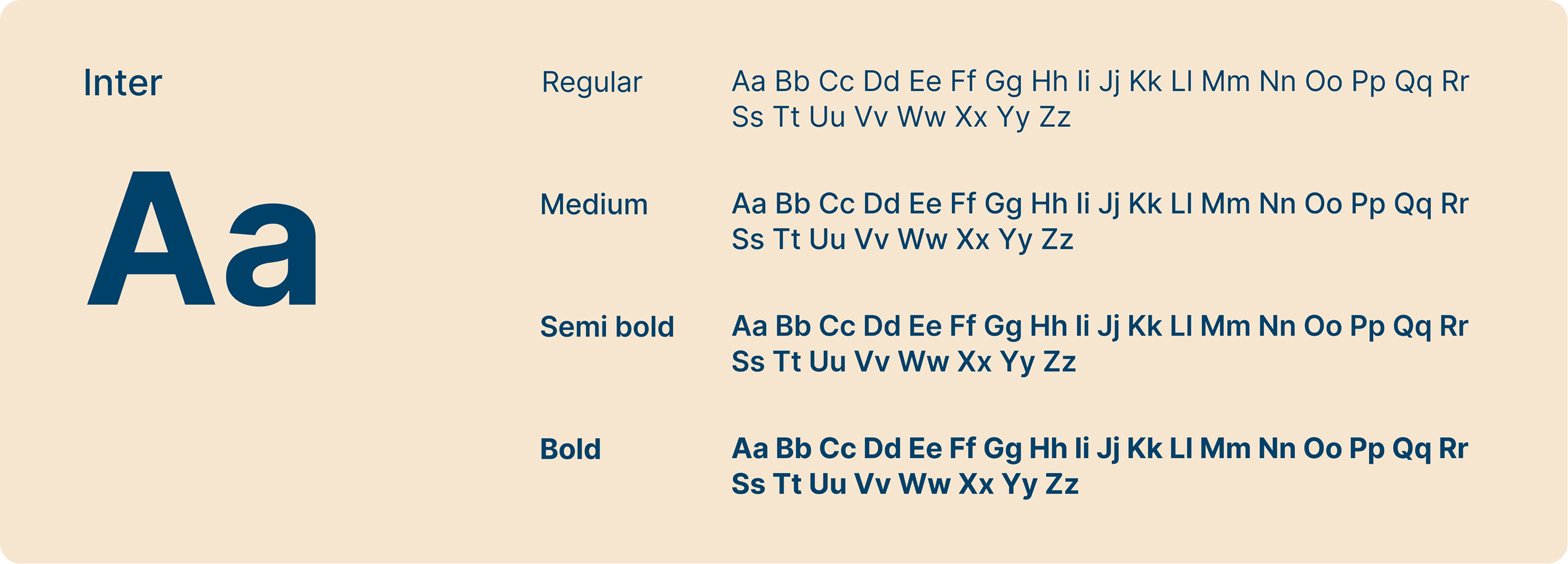
Iconography
We chose easy-to-understand icons for our app to make it simple for everyone to use. Each icon shows what it does, like a magnifying glass for searching. This helps people find what they need quickly.
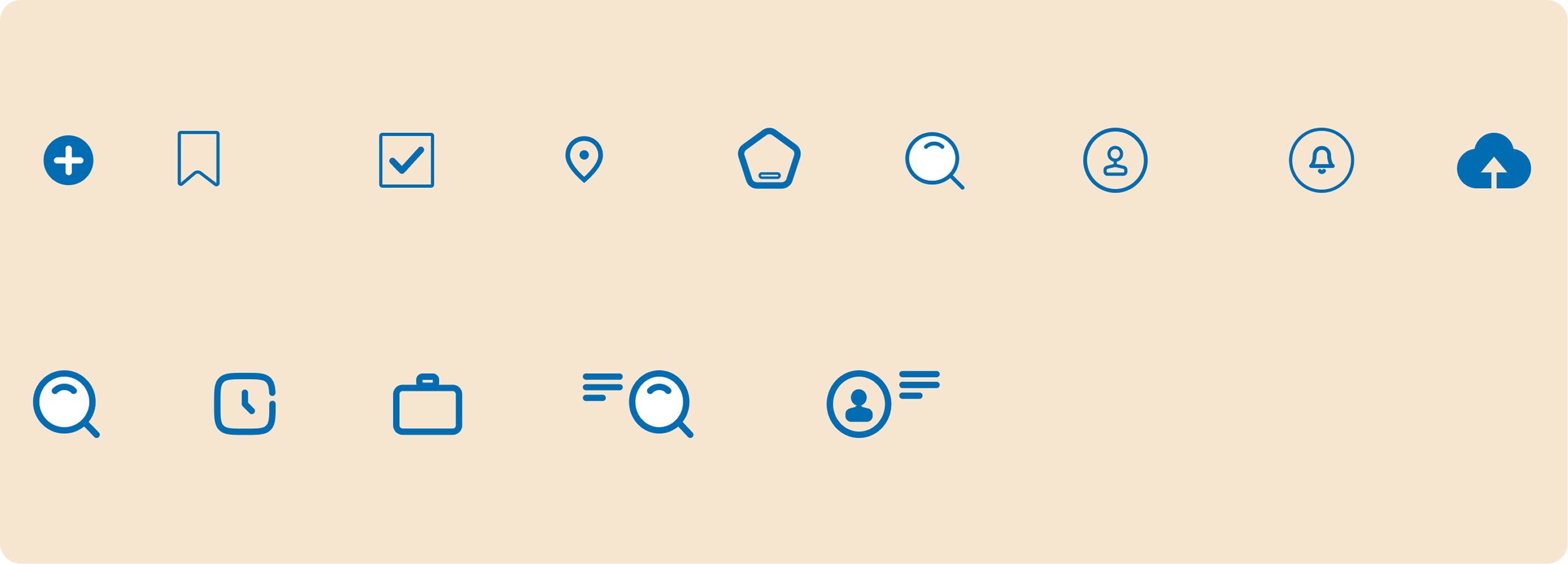
Button State
In the FlexiConnect app, we've chosen simple buttons that are easy to understand. Each button has a clear purpose.
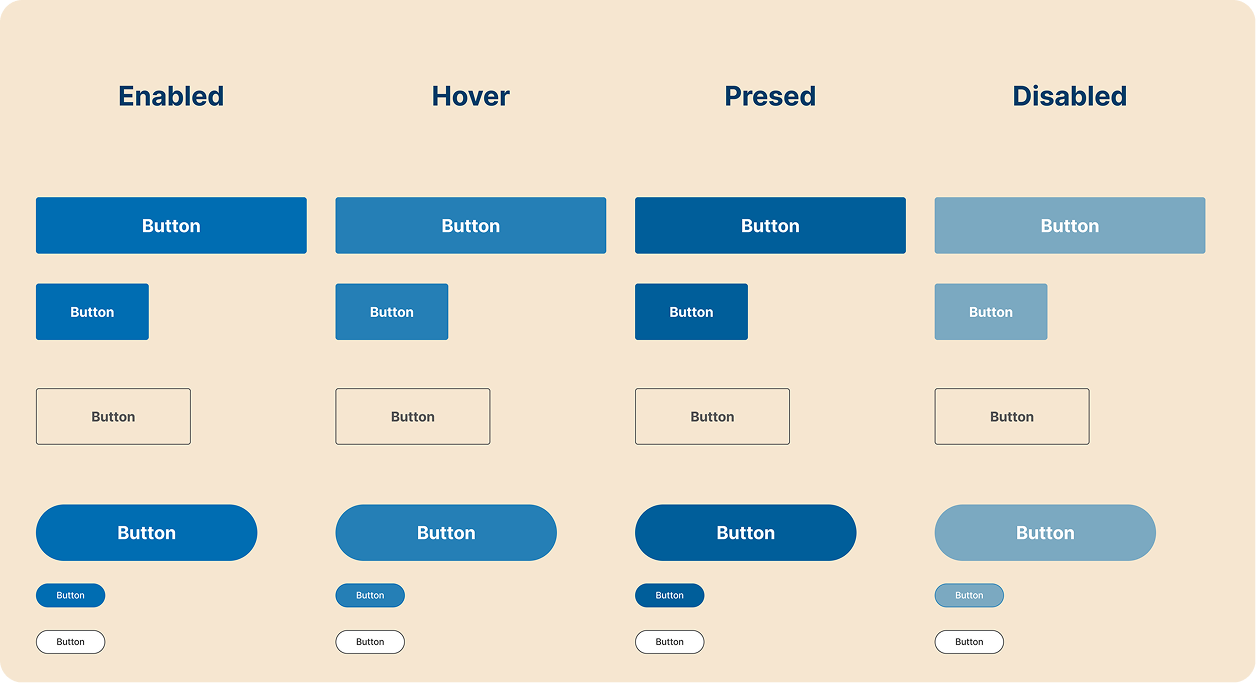
Input Field
In the FlexiConnect app, input fields are designed to be user-friendly, clear, easy to use, and simple for users to input information.

 Filmon.
Filmon.

